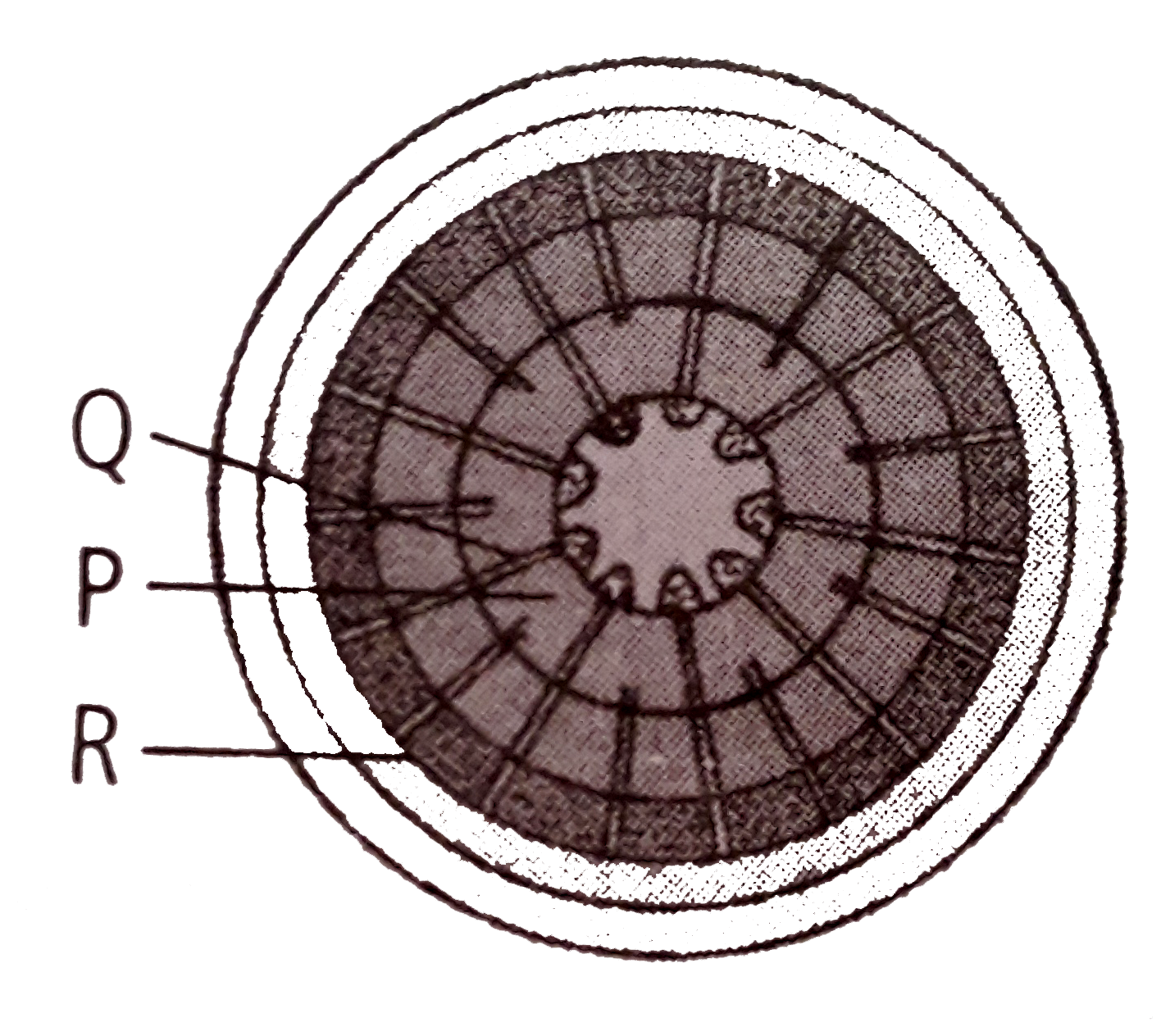vascular cambium of stem is
partly primary and secondary meristem
primary meristem
secondary meristem
intercalary meristem
The correct Answer is:A
To answer the question regarding the vascular cambium of the stem, we will analyze the options provided and determine the correct classification of the vascular cambium.
1. Understanding Vascular Cambium:
- The vascular cambium is a type of lateral meristem found in vascular plants. It is responsible for the secondary growth of stems and roots, contributing to the increase in thickness.
2. Identifying Types of Meristems:
- Meristems are classified into three main types:
- Apical Meristems: Responsible for primary growth (lengthening of the plant).
- Lateral Meristems: Responsible for secondary growth (thickening of the plant).
- Intercalary Meristems: Found in some plants, these are located at the base of leaves or internodes and contribute to growth in length.
3. Vascular Cambium as a Lateral Meristem:
- The vascular cambium is classified as a lateral meristem because it is involved in secondary growth, which increases the girth of the plant. It produces xylem (wood) towards the inside and phloem (bark) towards the outside.
4. Analyzing the Options:
- Option A: Partially primary and secondary meristem: This is incorrect because the vascular cambium is exclusively a secondary meristem.
- Option B: Primary: This is incorrect as the vascular cambium does not contribute to primary growth.
- Option C: Secondary meristem: This is correct because the vascular cambium is indeed a secondary meristem responsible for secondary growth.
- Option D: Intercalary meristem: This is incorrect as intercalary meristems are not related to the vascular cambium.
5. Conclusion:
- The correct answer is Option C: Secondary meristem.
- The vascular cambium is a type of lateral meristem found in vascular plants. It is responsible for the secondary growth of stems and roots, contributing to the increase in thickness.
- Meristems are classified into three main types:
- Apical Meristems: Responsible for primary growth (lengthening of the plant).
- Lateral Meristems: Responsible for secondary growth (thickening of the plant).
- Intercalary Meristems: Found in some plants, these are located at the base of leaves or internodes and contribute to growth in length.
- The vascular cambium is classified as a lateral meristem because it is involved in secondary growth, which increases the girth of the plant. It produces xylem (wood) towards the inside and phloem (bark) towards the outside.
- Option A: Partially primary and secondary meristem: This is incorrect because the vascular cambium is exclusively a secondary meristem.
- Option B: Primary: This is incorrect as the vascular cambium does not contribute to primary growth.
- Option C: Secondary meristem: This is correct because the vascular cambium is indeed a secondary meristem responsible for secondary growth.
- Option D: Intercalary meristem: This is incorrect as intercalary meristems are not related to the vascular cambium.
- The correct answer is Option C: Secondary meristem.
Topper's Solved these Questions
Similar Questions
Knowledge Check

During the secondary growth in a dicotyledonous stem, the fusiform initials of vascular cambium give rise to which of the given labelled part?APBRCQDboth a and b
In a dicot root , vascular cambium is
View SolutionHow many of the following meristems are completely secondary in origin ?
A. Cork cambium of a dicot stem
B. Vascular cambium of a dicot stem
C. Cork cambium of a dicot root
D. Vascular cambium of a dicot root
View SolutionAssertion :- Vascular cambium of dicot stem shows dual origin.
Reason :- Partially it is made up of primary meristem and partially from secondary meristem.
View SolutionVascular cambium of the root is an example of
View SolutionIn a dicot root, vascular cambium originates from
View SolutionIn a dicot root, vascular cambium originates from
View SolutionThe vascular cambium of dicot root originates from the
View Solution
